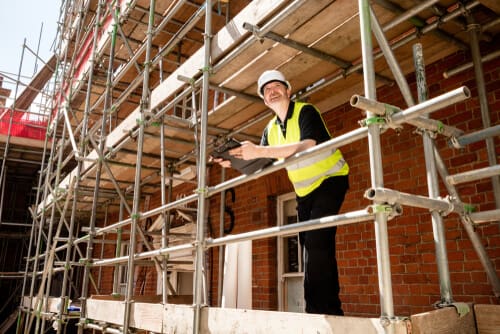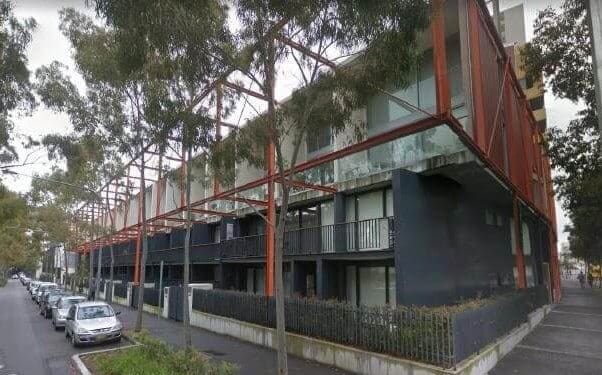By Sue Williams and Jimmy Thomson
Someone will have to die before the NSW Government properly fixes the system for making sure high-rise buildings are constructed safely, a leading Australian building consultant has claimed.
And the answer is not to blame certifiers, who have neither the skills nor requirements to be quality controllers.
“It will take that kind of tragedy before they’ll act,” says Robert Hart, in the wake of the publicity surrounding the Opal Tower crisis.
Meanwhile, the state government targeting ‘dodgy certifiers’ is missing the point, adds Mr Hart, one of the members of a specialist committee recently set up by Engineers Australia to report on the state of new apartment buildings in NSW
Mr Hart, who’s been central to a number of Engineers Australia inquiries into building industry certification, says he’s outraged by the standard of debate that’s followed the evacuation of the Sydney Olympic Park tower because of a cracking supporting wall in the 35-storey building.
He says it’s not the certifiers who are at fault in the state’s myriad defective apartment blocks – it’s the sub-contractors who constructed them in the first place.
And then, he says, the fault lies with a series of governments and their ministers who’ve taken no action to remedy the real problems, including ignoring 100 ‘critical’ reforms suggested in a 2016 report the State Government instigated itself.
“They’ve received so many warnings that the situation is critical, but they’ve done nothing,’’ says Mr Hart.
“You talk about people fiddling while Rome burns, but the man responsible for sorting this out, [Minister for Innovation and Better Regulation] Matt Kean hasn’t even picked up the fiddle. It’s bloody ridiculous.”
Minister Kean strongly denied the allegation that he and his government had done nothing to resolve the issues around certification.
“Since coming to office, I have been working on fixing the system that Labor botched when they privatised certification,” Mr Kean told the Financial Review.
“In 2015 the NSW Liberals & Nationals commissioned Michael Lambert to report on how to clean up Labor’s mess and to restore confidence in the building sector.
“In October, I passed the nation’s leading certification reforms, implementing Michael Lambert’s key recommendations, with serious penalties for certifiers who do the wrong thing.
“I also released an options paper setting out further options to improve the certification industry, which led to the plan I announced last week.”
Minister Kean this week blamed certification and corruption in the industry as a whole for the kind of problems that have afflicted the Opal building (although not the Opal per se), announcing a crackdown on ‘cowboy’ certifiers.
“The majority of certifiers are doing the right thing, but it’s time for the cowboys to go,” Mr Kean adding that it was unacceptable for certifiers to sign off on buildings that weren’t fit to live in.
He also blamed the previous Labor government for having created the problem by introducing self-certification when it was in power.
However, Mr Hart argues that high-rise apartment block defects are an inevitable result of a “catastrophically flawed” system for building in NSW.
“You can’t try to blame certifiers; in this system they’re the ones who just collect the paperwork from all the trades self-certifying their own work,” Mr Hart said. “They can’t possibly check everything as they don’t have the skills. It should be up to each individual branch of a project to be professionally certified with an independent governance body.
“NSW has the worst regulatory regime in the country, yet it’s being allowed to continue and people are really suffering from bad construction taking place with no supervision as a result. It’s really appalling. Will someone have to die before they’ll take it seriously?”
Fellow leading structural engineer Charles Rickard of Rickard Engineering also outlined the problems with the current system in a report in 2013, and said he’s been lobbying the Government, with Engineers Australia, ever since, to no avail.
He also fears it will take a tragedy – like the 22-storey Ronan Point tower block collapse in London two months after its completion in 1968 which killed four and injured 17 and led to a complete overhaul in the UK of building regulations – before changes are made here.
“Remember that collapse which became a landmark case and forced a change in all current practice?” Mr Rickard asked. “Here, why waste time auditing 40 per cent of certifiers?
“It’s the Government’s system of certification that is flawed. The person or company who designs must inspect everything and then certify each individual discipline. That’s nothing to do with the Principle Certifying Authority; he’s just the referee and, if there no rules to play by, the outcome is always dangerous chaos.”
A report in 2015/6 by former Treasury official Michael Lambert, who was appointed by the NSW Government to review the Building Professionals Act, made around 150 recommendations for change – 100 that he labelled as “critical”.
It recommended a fully prescribed professional system of certification for every branch of a project – a building certifier for building work, and architectural certifier for the design, an electrical certifier for electrics, etc etc.
The governance body for each discipline would be then responsible for appointing and dismissing accredited, independent certifiers.
This would take the place of the current system, which was branded ‘a collection of pieces of paper, vague in content and without real accountability’, which ‘does not pass any test of due diligence’.
As a result of the Lambert Report, a number of representatives of the industry, including certifiers, architects, developers, construction companies and surveyors, all had a meeting with Mr Kean 18 months ago, at which the Government pledged action.
“They promised to do something, and then they did absolutely nothing,” said Mr Hart. “We have cases in other buildings where fire dampeners are being put on backwards and fire collars not in place. These kind of things are really putting people’s lives in jeopardy. We are desperate.”
An earlier report by UNSW found that 85 per cent of strata units were defective at completion while the NSW insurance industry has reported a post-completion additional cost in rectifying defects of 27 per cent (compared to the defects bond of only 2 per cent).
It has also been estimated that while proper quality controls would raise building costs by up to 6 per cent, the consequent savings in defect remediation would be substantially higher.
A version of this story first appeared in the Australian Financial Review



